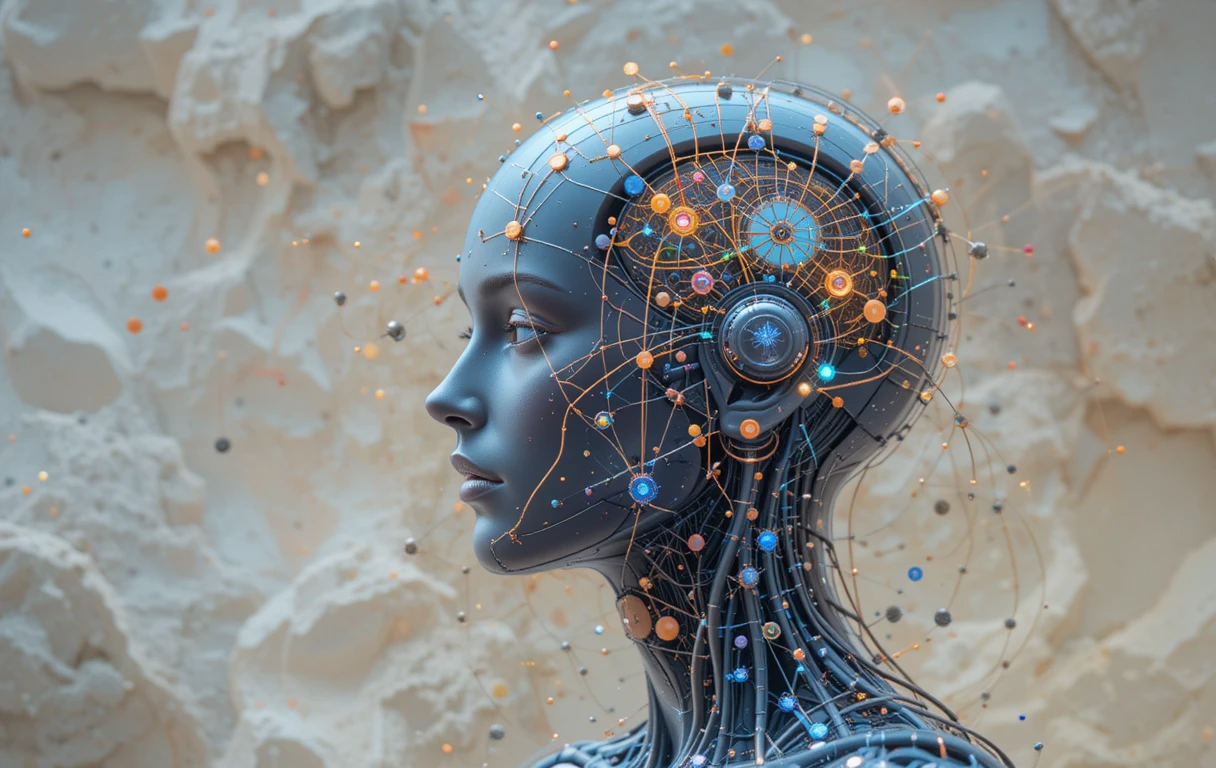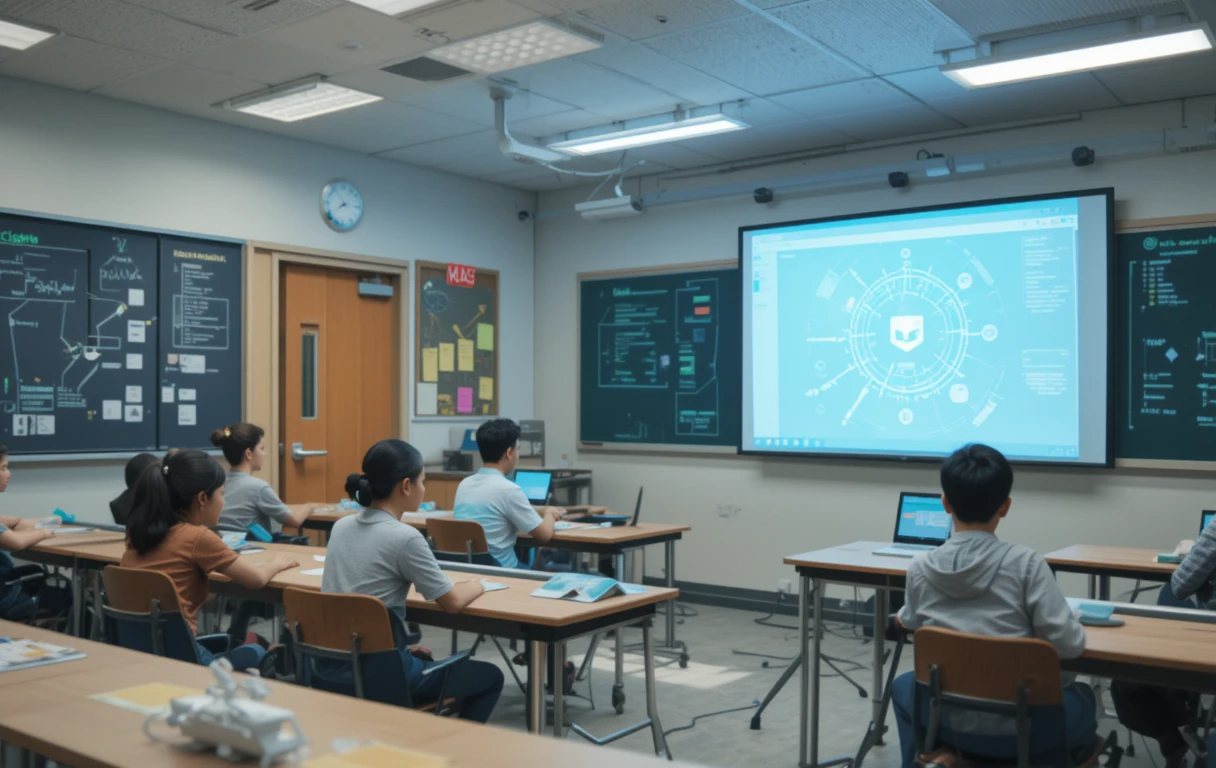Artificial Intelligence is revolutionizing education. From adaptive learning platforms to predictive analytics and intelligent tutoring systems, AI has the potential to make learning more personalized, accessible, and efficient. But with great power comes great responsibility.
As AI systems increasingly shape educational experiences and decisions, ethical concerns are rising to the forefront. How much student data should be collected? Who owns it? What if an AI system is biased? Who is responsible if it fails?
In this blog post, we will dive deep into the ethical landscape of AI in education, examining key concerns around privacy, algorithmic bias, data security, and institutional responsibility. We’ll also explore best practices to ensure that AI-driven educational tools are implemented fairly, transparently, and responsibly.
🤖 The Rise of AI in Education: A Double-Edged Sword
AI tools in education offer exciting benefits:
- Personalized learning paths
- Smart grading and feedback
- Early warning systems for at-risk students
- Virtual teaching assistants
- Data-informed decisions for institutions
However, these benefits are tied to large-scale data collection and algorithmic decision-making, which introduce risks if not properly managed.
AI in education is not just a technical issue—it’s a deeply human one. It involves students’ rights, educators’ roles, institutional integrity, and societal equity.
🛡️ Privacy: Who Owns Student Data?
AI systems rely heavily on collecting and analyzing student data to make decisions or recommendations. This includes:
- Academic performance (grades, test scores)
- Behavioral data (login times, click patterns)
- Personal information (name, location, device)
- Social interactions (discussion boards, chats)
🔐 Ethical Concerns:
- Informed Consent: Are students fully aware of what data is being collected and how it’s used?
- Data Ownership: Do students own their data, or does the institution or vendor?
- Surveillance: Does constant monitoring impact student autonomy or trust?
- Data Retention: How long is data stored? Can students delete their data?
🔍 Real-World Example:
In 2020, controversy erupted when several universities used remote proctoring tools during exams that accessed students’ webcams, microphones, and screen activity. Many students felt this was invasive, even if it prevented cheating.
✅ Ethical Best Practices:
- Clearly explain what data is collected and why.
- Let students opt-in, opt-out, or limit data use.
- Use data anonymization techniques.
- Regularly audit data access and usage logs.
- Comply with legal standards like FERPA, GDPR, and COPPA.
⚖️ Algorithmic Bias: When AI Isn’t Fair
AI algorithms are only as good as the data they’re trained on. If historical or training data is biased, AI can perpetuate or even amplify those biases.
🧠 Types of Bias in Education AI:
- Socioeconomic Bias: Students from lower-income backgrounds may interact with systems differently, and AI might interpret this as lower engagement or capability.
- Racial/Ethnic Bias: If past data reflects systemic discrimination, AI predictions can unfairly affect certain student groups.
- Gender Bias: AI might suggest STEM tracks to male students more than female students based on biased historic data.
⚠️ Potential Outcomes:
- Incorrect risk predictions (e.g., flagging students as “at-risk” unfairly)
- Unequal access to advanced resources or interventions
- Skewed recommendations that reinforce stereotypes
💡 Case in Point:
A study in the UK found that an AI-based grading system used during COVID-19 disproportionately downgraded students from public schools compared to private schools—revealing bias in the system’s training data.
✅ Solutions and Safeguards:
- Train AI on diverse, inclusive datasets.
- Continuously test models for unintended biases.
- Include ethicists and diverse educators in AI development teams.
- Provide transparency into how algorithms work.
🔄 Responsibility: Who’s Accountable for AI Decisions?
AI often influences decisions like:
- Which students get interventions
- Which courses are recommended
- Which job matches are prioritized
But when things go wrong, who is responsible?
- The AI vendor?
- The institution?
- The faculty using the system?
- The algorithm itself?
❓ Ethical Gray Areas:
- What happens if a student fails because the AI misjudged their learning style?
- What if the system unfairly tracks participation metrics that penalize neurodivergent students?
🏛️ Institutions’ Ethical Duties:
- Oversight: Institutions must monitor AI performance and outcomes.
- Transparency: Students and staff should understand what the AI does and how.
- Appeal Systems: Students should be able to challenge AI-driven outcomes.
- Ethical Committees: Create institutional ethics boards to evaluate AI systems.
🧩 Transparency and Explainability
One of the biggest challenges in AI is the “black box” problem: AI systems make decisions that even their developers don’t fully understand.
In education, this is particularly dangerous. Students and teachers deserve to know:
- Why a student was flagged as struggling
- How a grade prediction was made
- Why a resource or path was recommended
📘 Example:
If an AI tutor recommends a specific lesson or skips a module, it should explain the reason so students aren’t confused or disadvantaged.
✅ Best Practices for Explainable AI:
- Use models that prioritize interpretability (e.g., decision trees over neural nets).
- Provide plain-language explanations of AI decisions.
- Include human-in-the-loop systems to validate critical decisions.
🌍 Equity and Access: Will AI Widen the Digital Divide?
AI-powered education tools are often digital and cloud-based. But what happens to students who:
- Have limited internet access?
- Use outdated devices?
- Live in areas with poor infrastructure?
- Have disabilities the system doesn’t accommodate?
If AI tools are not inclusive, they may widen educational inequities rather than solve them.
💻 Key Challenges:
- Underrepresented communities may be left out of AI’s benefits.
- Students with disabilities may struggle with inaccessible platforms.
- Schools with limited budgets may lag in adopting responsible AI.
✅ Equity-Focused Strategies:
- Design inclusive platforms with universal design principles.
- Offer offline options or lightweight versions of AI tools.
- Provide training and access to technology for all students.
- Advocate for government and NGO support to bridge the tech gap.
🧭 Ethical Frameworks and Guidelines
To ensure responsible AI use in education, several organizations have proposed frameworks:
📜 Notable Frameworks:
- UNESCO AI in Education Guidelines
- EU High-Level Expert Group on AI Ethics
- IEEE Ethically Aligned Design
- World Economic Forum AI Governance Toolkit
These frameworks stress:
- Human-centered design
- Fairness and inclusivity
- Data privacy and security
- Transparency and accountability
Institutions adopting AI should align with these ethical standards from day one.
🏁 Building a Culture of Ethical AI in Education
Ethical AI isn’t just about fixing problems after they occur—it’s about building a culture of thoughtful, inclusive, and transparent technology use.
🔧 Practical Steps for Educators and Institutions:
- Educate stakeholders (teachers, students, parents) on how AI systems work.
- Create AI literacy programs for faculty and students.
- Develop an internal AI ethics policy for your institution.
- Conduct regular audits of AI tools and their impacts.
- Engage students in feedback loops on AI experiences.
🔮 The Future of Ethical AI in Education
As AI continues to advance, ethical challenges will evolve too. Some emerging issues include:
- Emotion AI: Systems that track facial expressions or tone to gauge student emotions—raising new privacy questions.
- Generative AI in student writing: Tools like ChatGPT prompt questions about originality and plagiarism.
- AI-driven admissions: Can algorithms decide who gets into a university fairly?
The conversation around ethical AI in education will require constant collaboration between technologists, educators, policymakers, and students.
✍️ Final Thoughts
AI holds great promise to enhance education, but it must be handled with care. Ethical concerns about privacy, bias, accountability, transparency, and equity cannot be ignored. Educational institutions must take a proactive approach to ensure that AI tools uplift all students, not just a privileged few.
By embedding ethics into every stage of AI adoption—from design to deployment—we can ensure that AI in education is not just intelligent, but also just, fair, and human-centered.
The goal isn’t just to make education smarter. It’s to make it more equitable, ethical, and empowering for all learners.


